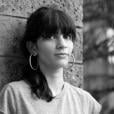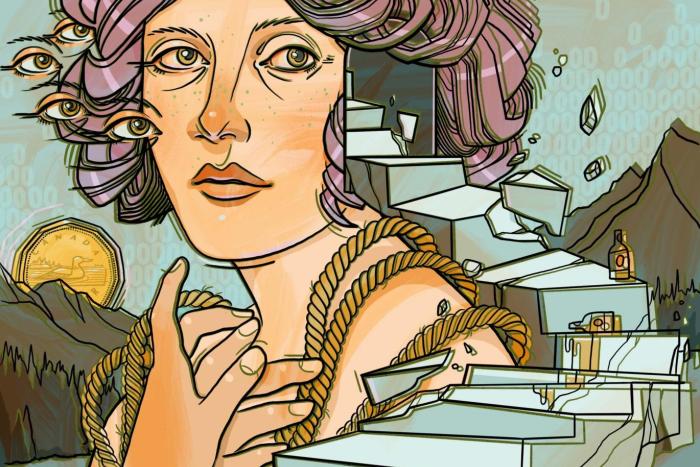What were we obsessed with, invested in and plagued by in 2023? Hazlitt’s writers reflect on the issues, big and small.
I live in a village in North Goa, in the last of four houses lining a quiet lane. On my first “practice walk,” I take barely fifteen steps away from my gate before becoming unbalanced, breathing under a cluster of bamboo trees. I then continue down the roughly tarred road, each step a victory. The next week, I succeed in extending my path, turning out of the lane, to the pale-pink training centre for catholic priests. A few weeks later, I make it down a sloping road, until I reach a large water tower: the village reserves. Here, I sit on a small strip of white concrete, before tentatively making my way home again.
These practice walks came about at the insistence of my physiotherapist, after an unexpected flare-up of the worst of my chronic illness symptoms: dizziness. Dizziness is the reason I can’t drink or dance. It’s the feeling of walking on a rocking boat, of losing my orientation in unpredictable ways. I first experienced this disabling sensation nearly eight years ago, and with time and effort, it had slowly, painstakingly, improved. So its resurgence was a serious glitch in my belief in recovery.
Just a day before my flare-up, I’d confidently walked to my mum’s house on the other side of the village, and back again. A week earlier, I’d ambled past the water tower and animal shelter to my friend’s apartment building. And now, here I was, trapped in a quarter-kilometre radius, creating a nonlinear timeline of doom in my head.
Reaching the water tower is the best-case scenario. Sometimes, despite the previous day’s progress, I turn back sooner, the open sky swimming in front of my eyes, the road a bouncy castle, the whole undertaking an act of defeat. But during this year of obsessively noticing my progressions and regressions, of despairing and railing against the universe, I began to notice something else: where I was walking; where I actually was.
To keep my balance, I need to look ahead. But when I feel myself wavering, I stop and look down. It’s the ground that holds me. Our village roads have eroded over the years, and the boundaries between tarred segments and the original land are blurry. Here, I poke a stick at small white-and-yellow wildflowers, pretending to look interested in case someone wonders why I’ve stopped. (No one is wondering, no one is here.) But soon, I actually am interested. These flowers grow in the driest seasons, and I wonder what sustains them. I pick one, its stem surprisingly sturdy, and carry it home. Another day, I notice a large patch of road covered in porcupine quills: evidence of a brawl. With whom, I wonder. The monitor lizard known to frequent the area? An unsuspecting dog? I gather two quills, smooth brown-and-white spears, and place them in a vase with the now-dried wildflowers. My trophy cabinet.
On my walks, the most difficult thing I can do is look up. It’s also instinctively where my eyes travel. I grew up on a tiny mountaintop with wide, open skies and little by way of entertainment: cloud-watching was a legitimate pastime. Now I struggle to keep my eyes on the road while the late-monsoon skies, startling bursts of white, blue and pink, loom overhead.
Lately, though, it’s the birds I can’t look away from.
The best and worst are swallows: swooping in unpredictable patterns, harder to follow than the most challenging of my balance exercises. Their erratic movements disrupt my visual centre of gravity, leaving me trembling and unsure where I stand. Despite my efforts to ignore them, I rock on my feet at these extraordinary creatures who can fly two hundred miles a day, who sleep in the clouds. Easier is the lone white-throated kingfisher, with his brilliant blue feathers and long red bill, sitting staidly on the electricity wires. A stable place to rest my eyes. Next to him is often a flock of tiny white-rumped munias, whose path, I discover, coincides with mine. Following them with my eyes (a treacherous feat), I learn they’ve built a nest in a partially ajar window of the priests’ residential quarters. I pause each day to look up at it, anxious that someone may slam the window shut.
Naturalists use the term “local patch” to refer to an area they visit regularly and get familiar with—a back garden, a public park, a strip of sandy beach. Through the practice of regular observation, each patch reveals itself as infused with life and change. My recent interest in ecology and climate has left me resentful that I can’t access wildlife the way it’s “meant to be” seen: in remote, uninhabited landscapes. But perhaps, through my practice walks, I’ve been experiencing the wildness of life all along.
In the monsoon, when untamed bushes narrow my path, a frangipani tree takes root inside a wall, its deep green leaves and brilliant white flowers sprouting from a human boundary. Other monsoon lives: carpets of moss covering trees, stones, walls, ledges. They waited in a desiccated state for nine months, springing back to life when the first rains arrived. In the driest season—our tropical winter—I hear a kitten’s howls emanating from deep thorny brambles. I can barely make out its small, frightened face. My partner and I rescue it. Two days later, it finds a home. My tiny quarter kilometre is teeming with life, growth, decay, rebirth. It is full of possibilities and futures that I used to think had nothing to do with me. But I am learning now that I’m a part of this small wild world, not apart from it: I too am being constantly formed and reformed.
Setting out on my practice walks was like falling through a wormhole to 2015: the year I first developed dizziness, when my life felt violently halted. Walking the same route every day, I felt like I was looping around a path that was also my life, ending exactly where I started. But the shelf mushrooms emerging from tree stumps, the racket-tailed drongos flying across the horizon, the rainbow after an unexpected shower, all show me a different truth: that even when everything feels depressingly the same, it is always changing.






